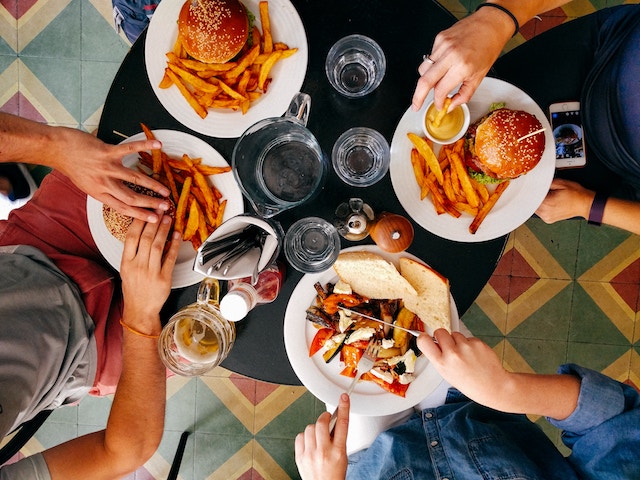January is a very resolution-friendly month. It’s still a time of cocooning, when we cosy up indoors and make plans for the year ahead.
And it’s a cash-strapped month for many of us, so we’re more motivated to stay home and cook from scratch, rather than blow our stretched finances on convenience food.
But once February comes rolling round, there tends to be a lift to our energy. We can sniff spring in the air, the days are getting brighter, and we want to be getting out and about more.
I always feel that the year takes off in February, and if we haven’t managed to set some solid foundations in place to support us, our good intentions become even harder to follow through on.
And let’s face it: when it comes to making changes to our normal diets, that’s always challenging. Whether it’s deciding to adopt a Meat-Free Mondays habit, go all-out and become vegan, eliminate sugar, or cut out all processed foods, we can expect something of a rollercoaster ride while we’re making the transition.
And with the abundance of fast-food joints and convenience meals available in our supermarkets, it can take a fair amount of self-control to stay on track with our good intentions.
I stopped eating meat over nine years ago, and I also went dairy-free two years ago. However, I have really struggled with staying true to my dairy-free choice. So I signed up to Veganuary this month for inspiration and motivation.
And so far this year (I realise it’s still early), I’ve effortlessly found myself batch-cooking on Sunday afternoons so that I have delicious and quick meals at the ready for the coming week. It makes such a difference when I do this, but up until the Veganuary challenge, I was very hit-and-miss with it.
I do believe that when it comes to making dietary changes, the old maxim, “fail to plan and you plan to fail,” is true!
So, I’ve compiled a few tips to help you stay on track with your own food intentions, whatever they may be:
Take baby steps. It does not have to be all or nothing. You can fall off the wagon many times and get back on again. Every time you feel challenged, remind yourself why you made this choice to begin with.
Be prepared to cook from scratch. It’s extremely difficult to control what we consume if we’re eating out or buying ready-meals. You don’t need to be a gourmet chef. There are a gazillion how-to videos on YouTube that will lead you through the process—just be sure to include “quick and easy” in your recipe search until you grow in confidence.
Meal planning. It doesn’t have to be a rigid plan, but it’s helpful to decide on three to four dishes that you can mix and match for lunch and dinner throughout the week. Also, plan for more snack-type meals to break things up and keep it interesting. Once you know what you’ll be eating, check out your pantry and then shop for all the ingredients you’ll need and don’t have in stock.
Batch cooking. This has been my savior. It’s all very well to plan your meals and shop ahead, but the real key to success (in my experience) is to block off a couple of hours and cook the lot in one go. Then divide into containers and store in your fridge, ready for speedy re-heated meals later in the week.
Frozen dinners. I don’t mean the supermarket variety. I always stick a couple of portions of soup and a few main courses in the freezer as well as the fridge. This takes the pressure off to consume everything I’ve cooked all in one week (because that can get boring). Instead, mix it up by drawing on the frozen stash midway through the week. It also means that I have a back-up plan for those weeks when I fall off the batch-cooking wagon.
Variety. I’ve seen some cool batch-cooking videos online that focus on prepping pretty much the same meals, with slight variations, for four days worth of lunches and dinners. I’m sure that works for some people, but not for me. I can easily eat the same thing two days running and enjoy it immensely, twice. But by day three, it will have lost its appeal. So I like to plan for a little bit of choice.
Treats. For me, self-deprivation never works. What does work is having something sweet or salty on hand that is aligned with my desired change. For example, I stock up on dairy-free ice-cream so that when the urge hits, I don’t fall into the trap of buying my (old) favorite flavour when the cravings strike.
Hit the online resources. Join a Facebook group for support, encouragement, and inspiration. Subscribe to exciting cookery channels. Milk the wealth of resources that are out there to help us all achieve our transitions to healthier food choices, whether they are for our own personal well-being, or include that of animals and the planet.
~
Author: Hilda CarrollImage: Dan Gold/Unsplash; Pixabay

No comments:
Post a Comment